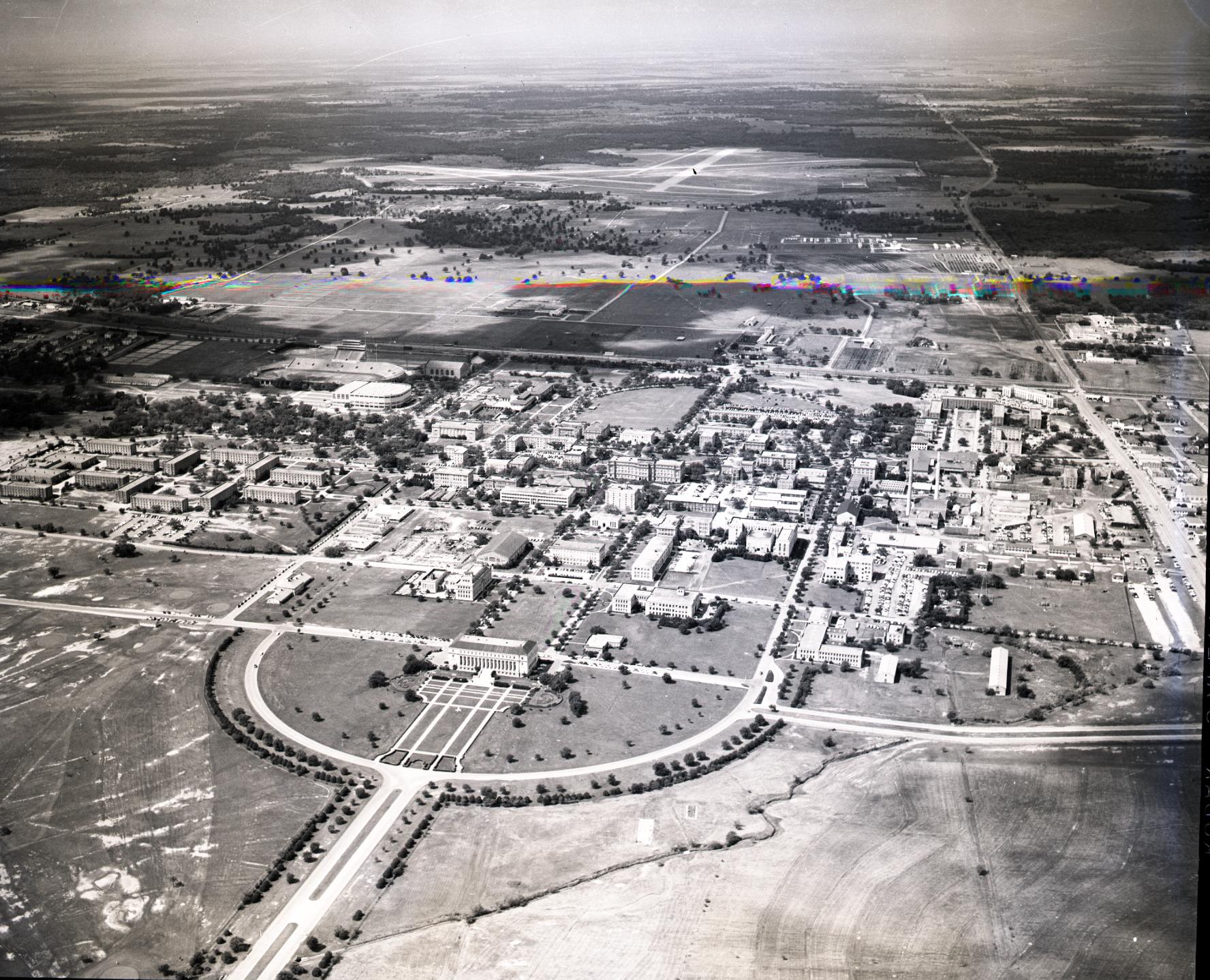
Department History
The Department of Entomology at Texas A&M University was founded in 1899 when a Legislative Act authorized the the Agricultural and Mechanical College of Texas to employ an expert entomologist. Frederick W. Mally was hired that year, and the department was established.
This act kickstarted a legacy of excellence in entomology that has now continued at Texas A&M University for over 100 years. Read below to learn about the decades of change and advancement in teaching, research and Extension in our department.
Historical Highlights
1900s
From 1899-1902, Mally established teaching and research programs in entomology to devise controls for insect pests like the boll weevil.
By 1904, there were three entomologists in the department and three undergraduate level entomology courses, including apiculture and advanced economic entomology. The number of courses increased to 11 by 1907.
1910s
The Department of Entomology and Division of Entomology in the Texas Agricultural Experiment Station continued to expand and strengthen instructional courses for students and programming for producers, respectively, throughout the next decade.
In 1917, Ivan Shiller, a student in the department, discovered the first pink bollworm in the U.S. in Hearne, Texas, while working on a summer job with the U.S. Department of Agriculture. The occurrence of this pest had a major impact on the direction of insect research in the state and, to a degree, on the further development of the Department of Entomology. The department’s education, research and Extension programs were well-established by the close of the decade.
1920s
The pink bollworm threat resulted in cooperative research efforts and a joint laboratory in Presidio between Extension and the USDA to study the pest. Other significant pests like the cotton flea hopper led the Texas Legislature to further expand the Department of Entomology’s personnel and capacity to address emerging insect pests.
The first stationing of entomologists at off-campus research stations occurred during the 1920s
1930s
The Great Depression took its toll on the department during the 1930s. Teaching and research continued to the extent possible, but funds were reduced and faculty and staff suffered pay cuts.
Researchers continued to study the biology and life cycles of major agricultural pests, including boll weevils, bollworms, pink bollworms and flea hoppers on campus.
1940s
Young faculty members and AgriLife Extension staff entered the military, leaving a small core of teachers and researchers to maintain programs until the war ended.
In 1947, the Department of Entomology absorbed two research arms – the Division of Entomology and Division of Apiculture, which studied honeybees. The department included nine faculty with joint teaching and research duties, four full-time researchers, one full-time teacher, and one Extension agent.
An Extension entomologist was assigned to the Rio Grande Valley in 1948, and in 1949 USDA and AgriLife Extension cooperative research efforts resulted in the successful biological control of the Rhodesgrass mealybug.
1950s
The Department and entomologic science entered a new era after World War II ended. The number of entomology courses increased to accommodate increased undergraduate and graduate student enrollment. Teaching and research activities moved into the just-completed Biological Sciences building at the center of campus.
The development of chlorinated and organophosphate insecticides during the war and their initial effectiveness against many pests fostered a post-war dependency upon those chemicals. Entomologists led new approaches to pest control when it was discovered that insects like boll weevils were developing resistance to chemicals.
A number of new faculty joined the Department by the end of the decade, which marked a realization that basic and applied research was essential for a forward-looking program. The Department diversified its research and teaching programs and strengthened related fields, including toxicology, physiology and ecology.
1960s
The heavy reliance on insecticides for pest control during the 1950s resulted in environmental and insect resistance concerns. By the early 1960s, much of the research in the department was geared toward finding alternative solutions to insect control.
Department members played prominent roles in developing what would become Integrated Pest Management. Increased undergraduate and graduate student enrollments led to additional instructors and researchers to cover the expanding science of pest control into new fields like forestry and veterinary/medical entomology.
1970s
Development and implementation of Integrated Pest Management methodologies dominated the department’s education, research and Extension efforts during the decade. Research projects began to involve intensive use of computer technology and systems analysis to create crop ecosystem models.
The Department added a large number of on- and off-campus faculty with diverse specialties directed toward Integrated Pest Management. The additions broadened research and teaching programs, including urban entomology, biological control.
By 1977, the Department of Entomology occupied the new Minnie Belle Heep Building. For the first time, the department had its own teaching and research facility.
1980s
A departmental review in 1979 identified specialization areas necessary to enhance the Department’s research and teaching capabilities, including biological control, biosystematics, systems and computer sciences, toxicology, physiology, pathology, and molecular biology.
Over the decade, the Department added infrastructure, including a biological control laboratory and quarantine facility, expanded its technological capabilities, including analytic crop modeling to provide a holistic approach to crop production systems, and continued to expand its expertise with additional faculty and specialists.
1990s
The 1990s brought considerable change to the entomological field. The dawning of the Information Age placed pressure on Extension entomologists to meet the demand for information, while new technology opened opportunities for research and solutions.
The decade also introduced new threats to the ever-evolving insect pest problems Texas farmers, ranchers and homeowners faced, including the Africanized honeybee, Formosan termite and citrus leaf miner.
The Department was well-positioned to evolve, and cross-department collaborations, including with the Department of Biochemistry and Biophysics, create teaching opportunities for faculty and entomology specialization for students. The Department’s research and Extension capacity was statewide by the end of the decade with 15 Extension and 11 research faculty located at regional Texas A&M AgriLife Research and Extension Centers and 30 local Integrated Pest Management agents housed in county offices.